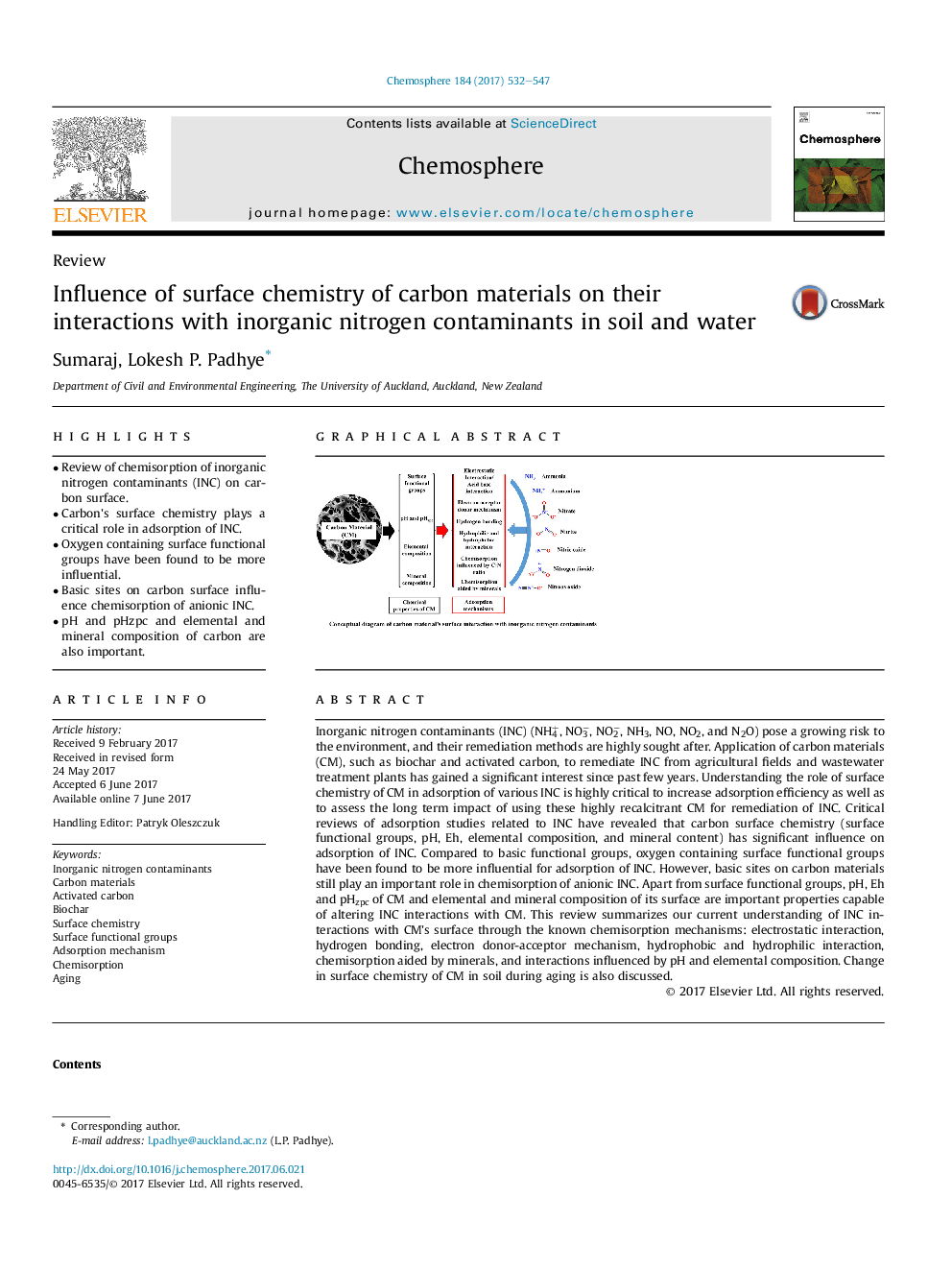| کد مقاله | کد نشریه | سال انتشار | مقاله انگلیسی | نسخه تمام متن |
|---|---|---|---|---|
| 5746200 | 1618787 | 2017 | 16 صفحه PDF | دانلود رایگان |
- Review of chemisorption of inorganic nitrogen contaminants (INC) on carbon surface.
- Carbon's surface chemistry plays a critical role in adsorption of INC.
- Oxygen containing surface functional groups have been found to be more influential.
- Basic sites on carbon surface influence chemisorption of anionic INC.
- pH and pHzpc and elemental and mineral composition of carbon are also important.
Inorganic nitrogen contaminants (INC) (NH4+, NO3â, NO2â, NH3, NO, NO2, and N2O) pose a growing risk to the environment, and their remediation methods are highly sought after. Application of carbon materials (CM), such as biochar and activated carbon, to remediate INC from agricultural fields and wastewater treatment plants has gained a significant interest since past few years. Understanding the role of surface chemistry of CM in adsorption of various INC is highly critical to increase adsorption efficiency as well as to assess the long term impact of using these highly recalcitrant CM for remediation of INC. Critical reviews of adsorption studies related to INC have revealed that carbon surface chemistry (surface functional groups, pH, Eh, elemental composition, and mineral content) has significant influence on adsorption of INC. Compared to basic functional groups, oxygen containing surface functional groups have been found to be more influential for adsorption of INC. However, basic sites on carbon materials still play an important role in chemisorption of anionic INC. Apart from surface functional groups, pH, Eh and pHzpc of CM and elemental and mineral composition of its surface are important properties capable of altering INC interactions with CM. This review summarizes our current understanding of INC interactions with CM's surface through the known chemisorption mechanisms: electrostatic interaction, hydrogen bonding, electron donor-acceptor mechanism, hydrophobic and hydrophilic interaction, chemisorption aided by minerals, and interactions influenced by pH and elemental composition. Change in surface chemistry of CM in soil during aging is also discussed.
236
Journal: Chemosphere - Volume 184, October 2017, Pages 532-547
